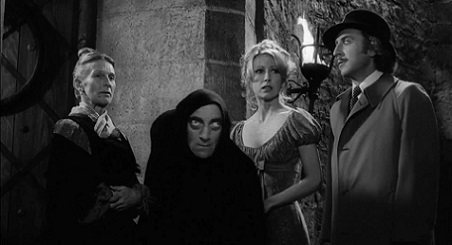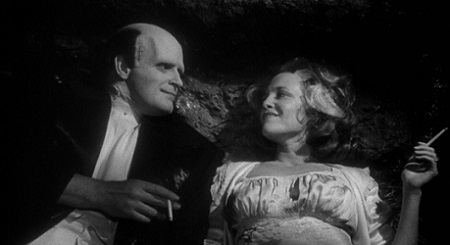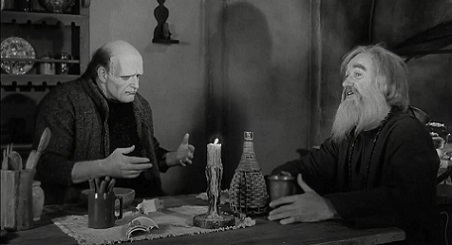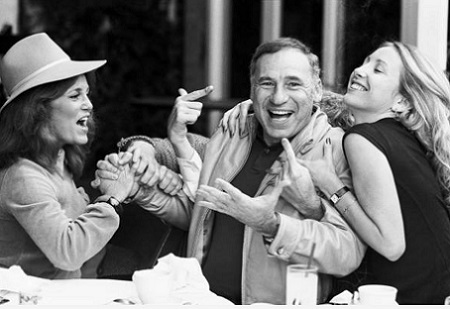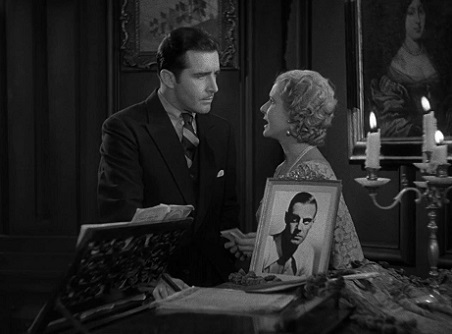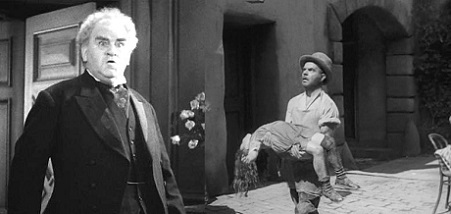One shall not trifle with the relationship between a boy and his dog. Tim Burton appreciated the story of Mary Shelley‘s 1881 book Frankenstein; or the Modern Prometheus, which was made into the James Whale movie Frankenstein (1931). Mix these three things together, and we are offered Burton‘s sensibility for story combined with an inclination for stop-motion animation to offer us the comedy drama Frankenweenie (2012).
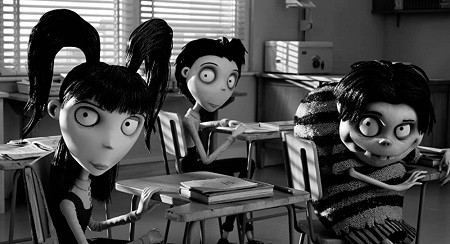
With a handful of important relationships at the center of Frankenweenie, perhaps the one at the emotional center of the movie is the one of Victor Frankenstein and his bull terrier dog, Sparky. Charlie Tahan voices the boy scientist and filmmaker Victor Frankenstein. Frank Welker voices Sparky, his dog. Frankenstein is a bit quiet and awkward among his classmates, so his parents push him into playing baseball.

It was at the baseball game that Victor’s parents, Edward and Susan as voiced by Martin Short and Catherine O’Hara, respectively, see rejoice turn to sorrow when Victor hits a home run. The sorrow comes in, along with the homage and parody of the Frankenstein movie comes into play as Sparky meets his demise. In true Tim Burton style, what comes next is meant to celebrate the love for a dog in as comedically inappropriate a way as possible.
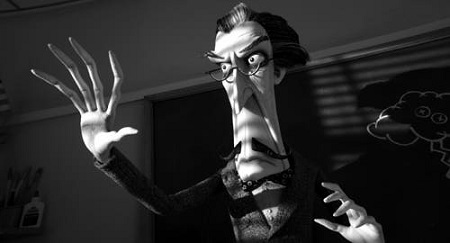
In the aftermath of Sparky’s death, Victor’s school happens to bring in a new science teacher named Mr. Rzykruski, as voiced by Martin Landau. Mr. Rzykruski demonstrates the effect of electricity on dead frogs to his classroom in New Holland. Victor is inspired to apply this concept on a deceased Sparky, succeeding in bringing his beloved pooch back to life. The occasion of a school science fair, Sparky’s escape from the Frankenstein’s attic, and the ignorance of Victor’s parents releases a drama that more fully brings in Victor’s schoolmates.

Classmates central to the larger story of Victor, his classmates, Sparky, a cat named Mr. Whiskers and, finally, a pair of goldfish include Edgar ‘E’ Gore as voiced by Atticus Shaffer, Elsa Van Helsing as voiced by Winona Ryder, Weird Girl as voiced by Catherine O’Hara, Toshiaki as voiced by James Hiroyuki Liao, Bob as voiced by Robert Capron and Nassor, as voiced by Martin Short. Without heading too specifically into the way the story works out, the notions of competition, friendship, parenting and the blurry lines that can emerge in a PG rated comedy drama are appropriate for this animated cartoon.

Writing credit for the screenplay that became Frankenweenie belongs to Leonard Ripps for the 1984 screenplay, Tim Burton for the idea and John August for this screenplay. The story is charming with its own quirky formula for who the heroes and villains are, without there being a refreshingly clear sense of the villain not being motivated by villainy. I give Frankenweenie as directed by Tim Burton 4.25-stars on a scale of 1-to-5.
Matt – Wednesday, October 12, 2022


